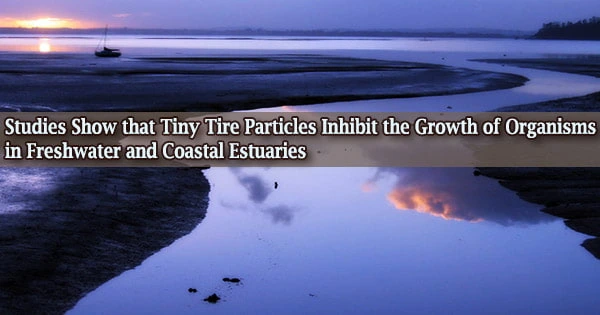Small particles from tires reduced the growth of species in freshwater and coastal estuary habitats, according to two new research papers published by Oregon State University experts.
The discoveries are part of a larger effort by scientists to figure out how microplastics and nanoplastics affect aquatic ecosystems and organisms. One of the most common types of microplastic in aquatic habitats is tire particles.
Harper, Brander, and several other graduate students and post-doctoral scientists in their labs, including Brittany Cunningham and Samreen Siddiqui, recently published two publications in Chemosphere and the Journal of Hazardous Materials about tire particle study.
“The focus on microplastics and now nanoplastics is still relatively new,” said Stacey Harper, an Oregon State professor who studies the environmental health and safety impacts of nanomaterials and led the research on tire particles in freshwater organisms.
“We’re now at the point of making policy decisions that we don’t have the science for. That’s why we are scrambling to supply that science.”
California is in the forefront of this issue, having just developed a statewide microplastics plan. Similar efforts are expected at the federal level, as well as possibly among other states, according to Susanne Brander, an assistant professor and ecotoxicologist at Oregon State University who led the coastal study on tire particles and served on one of the science advisory teams that helped develop the California strategy.
The focus on microplastics and now nanoplastics is still relatively new. We’re now at the point of making policy decisions that we don’t have the science for. That’s why we are scrambling to supply that science.
Stacey Harper
Synthetic rubber, filling agents, oils, and other additives are among the components that make up tire particles. The particles themselves, as well as the chemicals they discharge, known as leachate, could harm aquatic species that come into contact with them, according to the researchers.
According to the experts, around 30% of an automotive tire’s tread erodes and enters the environment throughout the course of its lifetime. They also mention a recent study that found that in the United States, more than 1.5 million metric tons of tire wear particles are released into the environment each year.
“I feel in particular with tire particles that everyone is measuring how much is out there, but very few groups are measuring what impact they are having,” Brander said. “That’s really the gap we were trying to patch up here.”
To do so, Oregon State University researchers exposed two model species from freshwater and estuarine habitats to varying quantities of micro and nano tire particles, as well as leachate produced by tire breakdown.
Microparticles are fragments with a length of less than 5 millimeters (0.20 inch). Nanoparticles are so minuscule that they can’t be seen with the naked eye or even under a microscope.
The model species in the estuary ecosystem paper headed by post-doctoral scientist Samreen Siddiqui were Inland Silverside and mysid shrimp. Findings by the researchers included:
- The researchers discovered that both organisms had significantly altered swimming behaviors after being exposed to concentrations detected in the environment, such as increased freezing, changes in positioning, and total distance traveled, which could lead to an increased risk of predation and challenges for the organisms to find food in the wild,.
- Both creatures grew at a slower rate depending on their exposure to micro tire particles, while fish exposed to nano tire particles grew at a slower rate as well.
- Leachates affected behavior but did not impact growth in either organism.
These findings lead the researchers to infer that aquatic ecosystems may be suffering harmful effects even at current levels of tire-related pollution, which are predicted to rise. The model species in the freshwater ecosystem paper, lead by graduate student Brittany Cunningham, were embryonic zebrafish and the crab Daphnia magna. Among the findings:
- Tire particle and leachate exposure caused death and developmental problems in both organisms.
- Tire particle leachate was the main driver of toxicity for both organisms.
- Exposure to nano tire particles enhanced toxicity in comparison to leachate alone.
These observations led the researchers to the conclusion that, while both creatures were hazardous to tire particles, their overall sensitivity to tire particles differed. They believe it is critical to comprehend these distinctions in order to determine the levels at which these contaminants become harmful.
They point out that this knowledge is critical for the establishment of risk assessments, which help policymakers make decisions. The researchers also suggested a number of strategies for preventing tire particles from entering the environment.
Placing rain gardens on the sides of roads to collect tire particles, installing particle capture devices on cars, producing longer-lasting tires, and investing in green infrastructures, such as public transportation, are all examples.
The study is funded by a Growing Convergence Research Big Idea grant from the National Science Foundation. The money will benefit the Pacific Northwest Consortium of Plastics, which Harper and Brander co-direct at Oregon State University.
Harper and Brander are based in the Oregon State College of Agricultural Sciences. Bryan Harper, Sarah Hutton, John Dickens, and Emily Pedersen are among the publications’ co-authors.
















